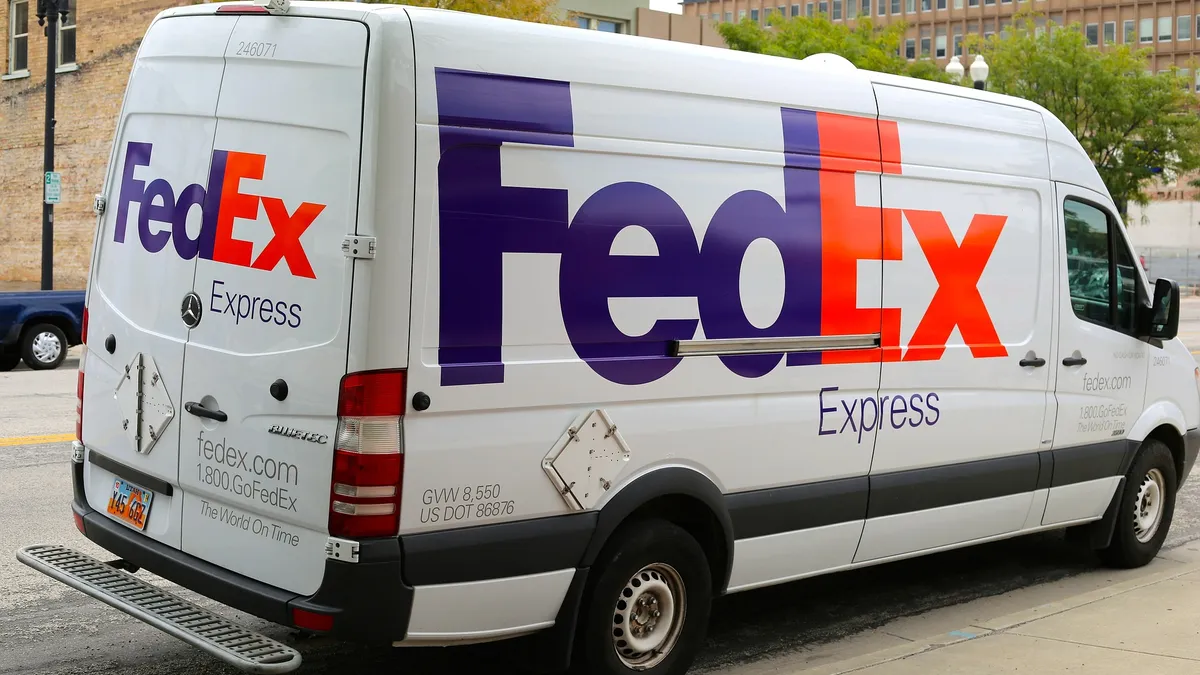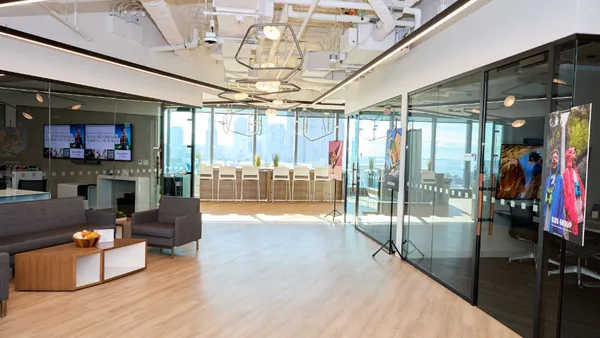Dive Brief:
-
Speaking on FedEx Corp.'s quarterly earnings call Tuesday afternoon, Mike Glenn, president and CEO of FedEx Services, told analysts that in order to “strike the right balance between volume growth and yield improvement to maximize operating margins at each operating company,” the shipper has severed relationships with several retail customers that didn’t agree with its pricing and capacity requirements for the peak holiday season, according to a transcript published by Seeking Alpha.
-
Shares of FedEx fell more than 3% on Tuesday as the shipper reported Q2 adjusted earnings of $2.80 per share on revenues of $14.93 billion, missing a Thomson Reuters consensus estimate for earnings of $2.90 per share on $14.92 billion in revenue, according to CNBC. The company's full-year adjusted earnings outlook for 2017 remained unchanged at between $11.85 to $12.35 per share.
-
Expenses hit Q2 revenue in the company’s FedEx Ground and FedEx Freight businesses and sent Q2 operating profit margin down to 7.8% from 9.1% last year.
Dive Insight:
Despite the quarterly revenue hit, founder and CEO Fred Smith told analysts Tuesday that the company doesn’t attempt to maximize profits by segment, but instead makes investments to boost the whole company longer term.
"FedEx is much more than a last-mile carrier,” Smith said. “FedEx is a global transport and logistics company that can connect almost every person and business in the world in 1 to 2 business days door-to-door and we provide unique value-added services across many industries ... Over 92% of our U.S. revenue comes from customers using both Express and Ground and 76% of that U.S. revenue is generated by customers that use Express, Ground and Freight. We, therefore, maybe investing in one segment of the portfolio at any given time to produce improved results for the corporation as a whole in the future.”
Despite Smith’s insistence that the shipper isn’t a last-mile carrier, e-commerce loomed large in its report. “We are closing out what has been another busy peak season for FedEx, largely driven by the continued rapid growth of e-commerce,” Glenn said Tuesday. “As e-commerce grows, so does the challenge of peak [demand], with multiple days of volume levels approaching or surpassing double our average daily volume. It should be noted that this surge in demand is driven primarily by a relatively small number of customers. Less than 50 large retail and e-tail customers are responsible for the majority of peak demand, so it’s extremely important that we understand their forecast well in advance to allow us to plan resources properly.”
FedEx’s confidence in playing hardball with retailers when it comes to rates and capacity minimums (which help the shipper’s ratios by keeping its hubs busy) is a sign that the hefty costs of e-commerce are unlikely to come down significantly any time soon.
“[S]elling on the internet is not efficient,” Nick Egelanian, president of retail development consultants SiteWorks International, told Retail Dive earlier this year. “The whole methodology of selling on the internet is completely foreign to what it’s like selling” at a store.
That could make omnichannel services that much more attractive, especially because it assigns some of the fulfillment responsibilities — at least the last mile of delivery when it comes to in-store pickup — to the customer. Indeed, management consulting firm Bain this week published a report urging retailers to consider the financial advantages of omnichannel, which traditional accounting methods don't always properly measure.















